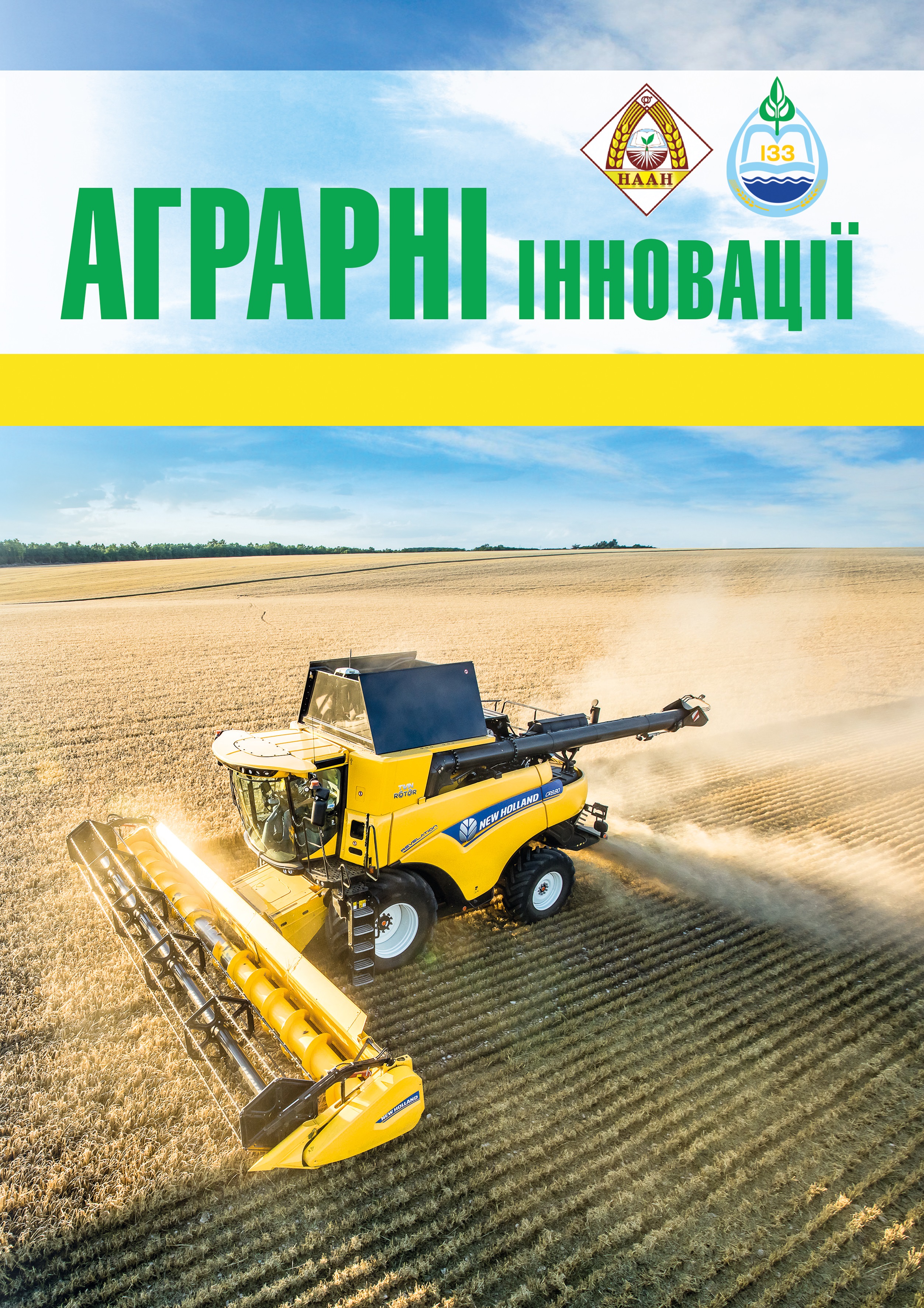EFFICIENCY OF MAIZE BREEDING UNDER IRRIGATION CONDITIONS OF THE SOUTHERN STEPPE
Abstract
The purpose. Is to analyze the results of intensive hybrid maize hybrids research for irrigation conditions and to identify prospects for further research. Methods: compara-tive, analytical, field, statistical and mathematical. Results. The Institute of Irrigated Agriculture of the NAAS created more than 50 hybrids of various ripeness groups, of which 19 hybrids were added to the State Register of Plant Varieties of Ukraine for 2020 – Stepoviy (FAO 190), Chornomor (FAO 250), Oleshkivsky (FAO 280), Skadovskiy (FAO 290 ), Azov (FAO 380), Askaniya (FAO 320), Tavrichanka (FAO 380), Tronka (FAO 380), Kakhovskiy (FAO 380), Gilea (FAO 430), Primorsky (FAO 420), Ingulsky (FAO 420), Chongar (FAO 420), Lamasan (FAO 430), Kr 9698 (FAO 430), Arabat (FAO 430), Vіra (FAO 460), Borisfen 600 NE (FAO 550), Naddnipryanska 50 (FAO 550). These are hybrids of inten-sive-type maize, with a high genetically determined pro-ductivity potential, sufficient resistance to major diseases and pests during irrigation, and rapid moisture loss of grain during ripening. They are able to effectively use irrigation water, mineral macro- and micronutrient fertilizers to form a unit of yield. The use of growth regulators showed a pos-itive effect on the growth and development of plants and, as a result, on the disclosure of the potential of hybrids. Regardless of the ripening group of hybrids, microfertilizers increased the grain yield of maize hybrids by 0,66–0,91 t/ha with an increase in yield of 6,3–8,6%. Conclusions. To obtain the guaranteed high yield and quality of grain of new corn hybrids of different groups of ripeness and growing them on irrigation in the conditions of the South of Ukraine,apply the cultivation of plants with microfertilizers Avatar-1, Nutrimix. At the same time, sow hybrids of medium ripening and medium ripening, and without irrigation - early ripening and medium ripening groups, which are able to more fully use soil moisture reserves and sediments of the growing season. The practical prospects of breeding research are the implementation of the developed techniques for the cre-ation of modern hybrids, which are able to stably realize the genetic potential of grain productivity, suitable for culti-vation with optimal and water-saving technologies.
References
2. Нужна М. В., Боденко Н. А. Моделі гібридів кукурудзи FAO 150-490 для умов зрошення. Plant Varieties Studying and Protection. 2018. Т. 14, № 1. C. 58–64. doi:10.21498/2518–1017.14.1.2018.126508.
3. Пілярська О. О., Михаленко І. В., Хоменко Т. М. Динаміка накопичення сирої та сухої надземної біомаси гібридами кукурудзи за краплинного зро-шення. Зрошуване землеробство: міжвід. темат. наук. збірник. 2019. Вип. 71. С. 108–113. doi. org/10.32848/0135-2369.2019.71.23.
4. Lavrynenko Yu. O., Vozhegova R. A., Hozh O. A. Productivity of corn hybrids of different FAO groups depending on microfertilizers and growth stimulants under irrigation in the south of Ukraine. Agricultural science and practice. 2016. №1. С. 55–60. doi. org/10.31073/agrovisnyk201807-03.
5. Науково-практичні рекомендації з технології вирощування кукурудзи в умовах зрошення Південного Степу України / Вожегова Р. А., Гож О. О., Глушко Т. В. та ін. Херсон : Грінь Д. С. 2015. 104 с.
6. Методика польових і лабораторних досліджень на зрошуваних землях / Р. А. Вожегова, Ю. О. Лавриненко, М. П. Малярчук та ін. Херсон : Грінь Д.С. 2014. 286 с.
7. Дисперсійний і кореляційний аналіз результатів польових дослідів / В. О. Ушкаренко, В. Л. Нікішенко, С. П. Голобородько, С. В. Коковіхін. Херсон: Айлант, 2009. 372 с.
8. Михайленко І. В., Хоменко Т. М. Біометричні показники гібридів кукурудзи різних груп ФАО від обробки мікродобривами за умов зрошення. Plant Varieties Studying and Protection. 2019. Vol. 15, № 1. C. 71–79. doi.org/10/21498/2518-1017.15.2019.162486.
9. Hutsch B.W., Schubert S. Harvest Index of Maize Zea mays L.): Are There Possibilities for Improvement. Adv. Agron. 2017. Vol. 146. P. 37–82. doi:10.1016/bs.agron.2017.07/004.
10. Fox G., O'Hare T. Ananlyaing maize grain quality. Achieving sustainable cultivation of maize. 2017. Vol.1, P. 237–260. doi.:10.19103/AS.2016.0001.14.
11. Mason S., Kmail Z., Galusha T., Jukić Ž. Path analysis of drought tolerant maize hybrid yield and yield components across planting dates. Journal of Central European Agriculture. 2019. 20(1). Р.194–207. doi. org//10.5513/JCEA01/20.1.2106.






